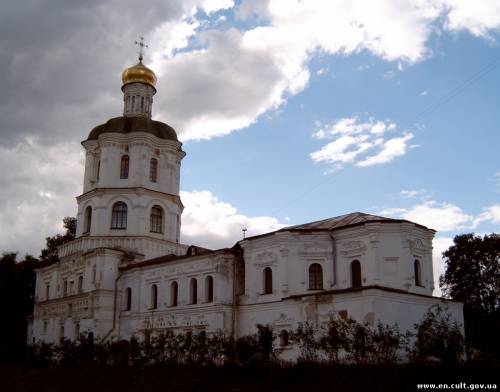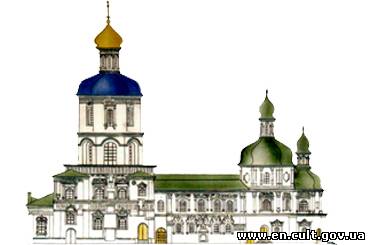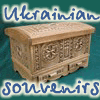 In the center of Chernihiv on the border of former fortress rampart – ancient historical center, one of the most wonderful buildings of the city now known as Collegium is situated
In the center of Chernihiv on the border of former fortress rampart – ancient historical center, one of the most wonderful buildings of the city now known as Collegium is situated.
Once this building was included to the cathedral Borys and Hlib monastery - residence of Chernihiv archbishops. It consists of a long two-storey building of a monastery refectory and a bell-tower attached to it.
Chernihiv archbishop Lazar Baranovych who moved in Chernihiv in 1672 started to expand the cathedra. Maybe building of a refectory was started on his initiative. In 1700 – 1702 Chernihiv archbishop Ioann Maksymovych got encouragement and financing from hetman Ivan Mazepa and built a bell-tower attached to it, connected it to the second floor of a refectory which had All Saints Church in its eastern part. Two domes of this church have not remained. Dome foundation board with Ivan Mazepa’s emblem and recording of his money offerings is exhibited here to be an evidence of hetman’s patronage.
The dome had a church named in honor of saint hetman patron – St. John the Precurser. A well-known regional descriptor of the XVIII century Opanas Shafons’kyi informed that during the foundation digging a silver idol was found. Silver Holy gates for cathedral monastery were made of it. Hetman Ivan Mazepa’s emblem was also engraved on the gates.
In the end of the XIX century a porch in Russian architecture style was attached to the western side of the dome. In researchers’ opinion a volume-space arrangement of this building comes from Russian complex buildings lengthened west-east, which included two-storey refectory (on the ground floor) with church and dome. The decoration of a building is close to Russian style especially of its south facade faced to Borys and Hlib monastery: platbands of different shapes, semi-columns, lines of arrises, majolica inserts, niches, columnar frieze make thick carpet with traceries. The top of a dome is decorated with ceramic icons “God’s Mother” and “The Vernicle Image of the Saviour”.
Since 1749 classes of philosophy of Chernihiv Collegium (which was located on the territory of this monastery in 1700-1776) were held in the refectory because of lack of apartments in Borys and Hlib monastery. Chernihiv Collegium is the first educational institution of higher level in Left-Bank Ukraine which operated from 1700 to 1786.
Collegium was founded on the sample of Kiev Mohyla Academy, which imitated principles of organization, tutorials of Western Europe universities and collegiums. Basic attention was paid to the study of Latin, less attention - to the Church Slavonic language, later they began to study Russian. They studied also Polish, Greek, German, French and Theory of poetry, Rhetoric, Philosophy, Mathematics, and Geography etc. Cossacks, citizens, clergy, peasants studied here too. Collegium trained well-educated personnel for government service, interpreters, literary men, clerics and physicians.
Among the students of Chernihiv Collegium there are names of about twenty known physicians of the XVIII century: they are P.A. Zagorskyi (an academician, founder of the first anatomic school in Russia), Y.T. Bilopol'skyi (a chief doctor in O.V. Suvorov’s army), F.I. Politkovskyi (professor of Moscow University, prominent clinician) and others. In 1786 Collegium was reorganized to become a theological seminary. During the reconstruction of the monument and adaptation for different establishments after monastery closing the remains of decorations were destroyed. During the Second World War the building was burned out. In 1954 – 1959 it was restored according to the project of Kyiv architect M.M. Hovdenko, architectural decor was also renewed. Nowadays the administration of National architectural-historical park “Chernihiv ancient”, permanent exhibitions of Ukrainian icon-painting, display devoted to Chernihiv Collegium and the exhibition “Chernihiv and Chernihivites hundred years ago” take place here.




























